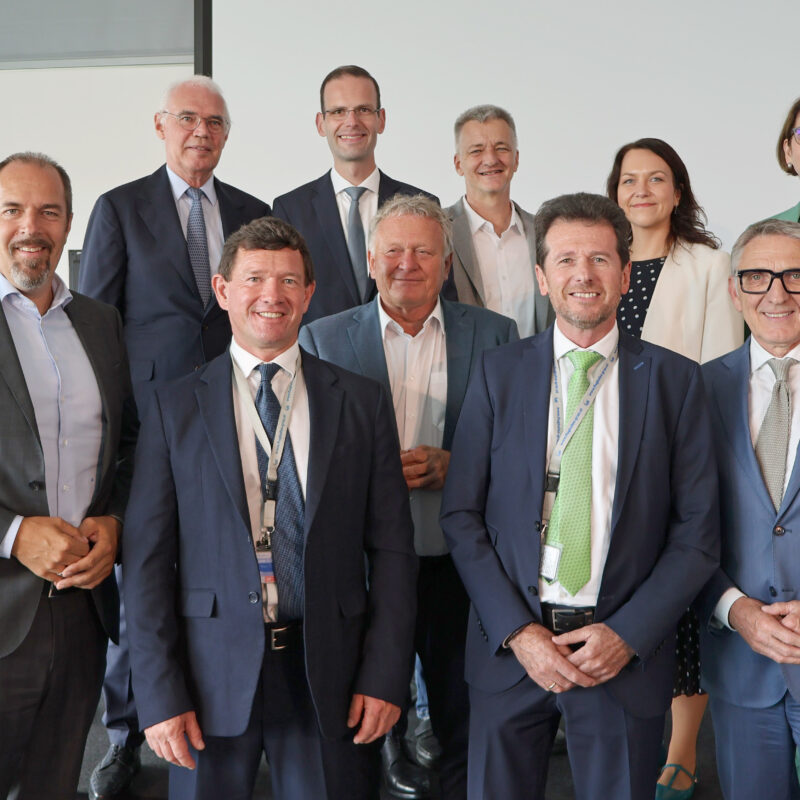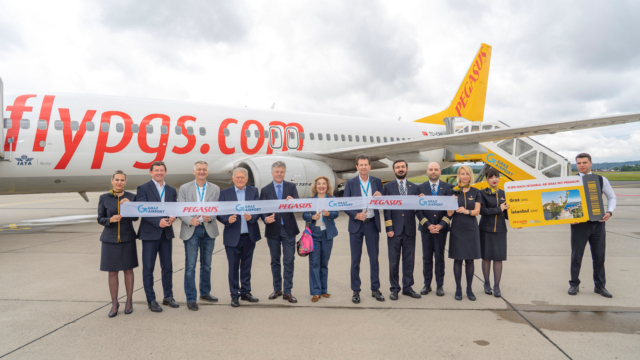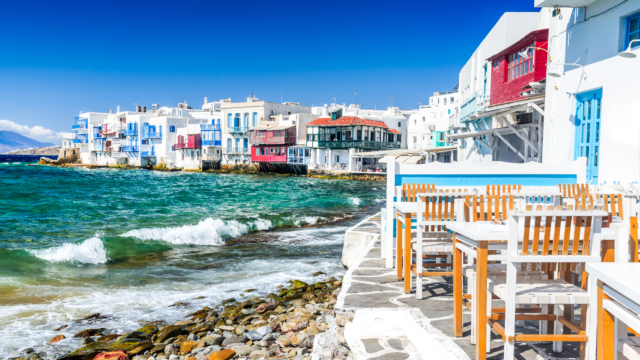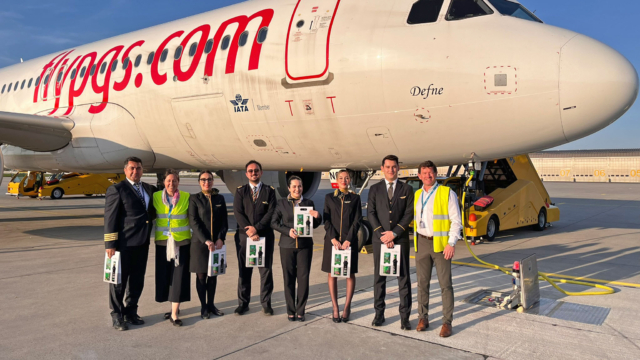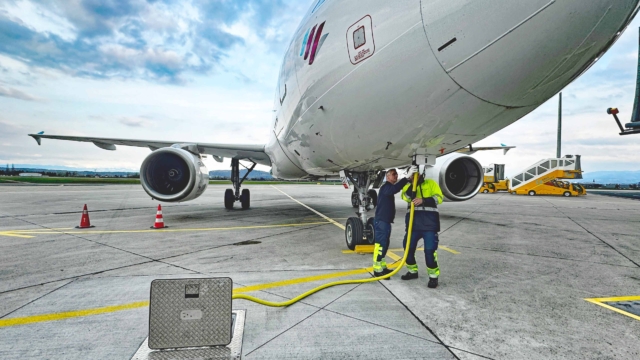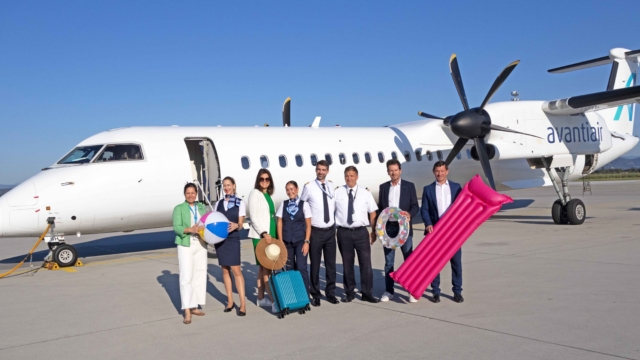
28.06.2024
110 years of Graz Airport
-
Business
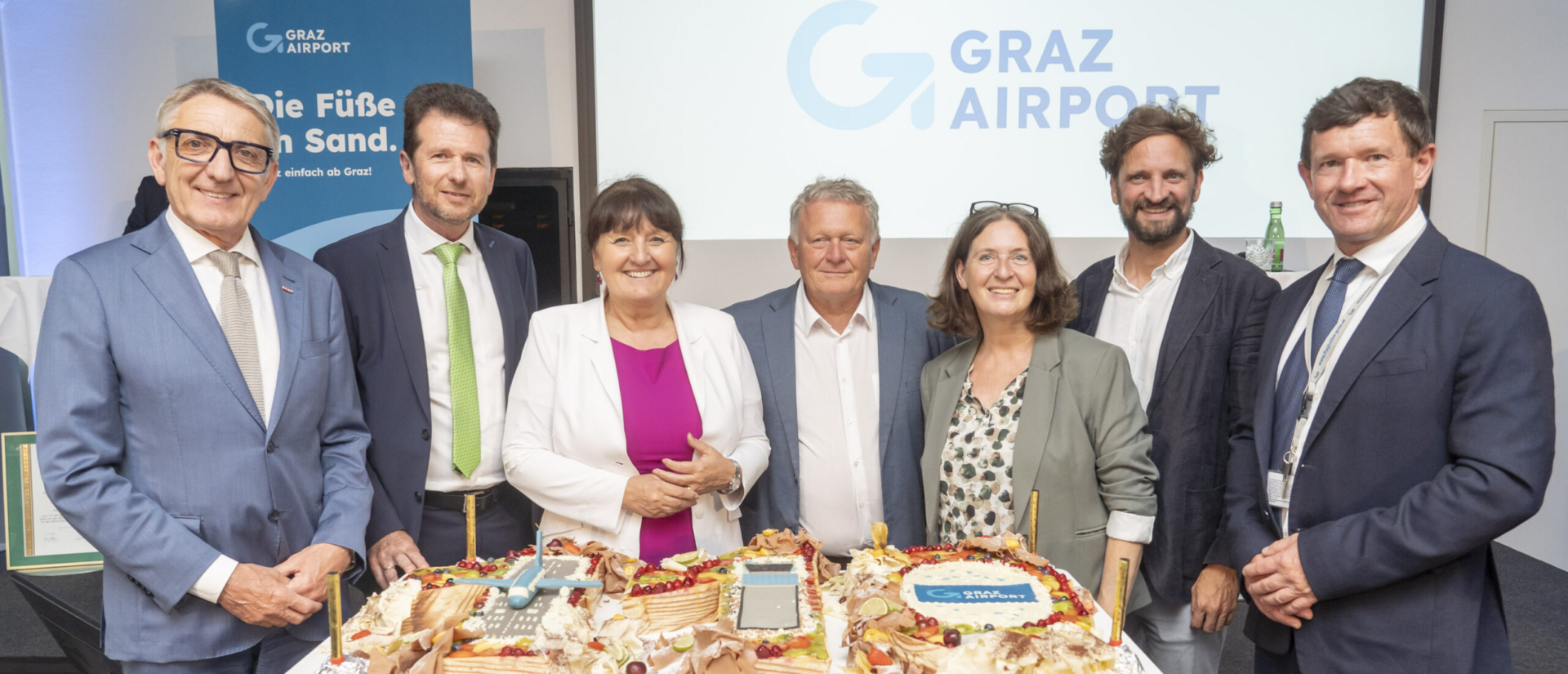
Graz Airport – ready for take-off for 110 years
- Press information: ceremony and expert discussions on 110th birthday
- New brand identity
- A short flight through the history of Graz Airport with the major milestones
Press release
The oldest Austrian commercial airport celebrates its 110th birthday without much nostalgia, but instead with an analysis of its present situation, a look into the future and a new, international brand identity.
Feldkirchen bei Graz, 28.06.2024: On 26.06.1914 the first official flight from the newly created Thalerhof Airfield took place. 110 years later, at a celebration and in an expert discussion above all the current opportunities, risks and innovation opportunities are analysed and discussed; while at the same time the airport positions itself for the future with a new brand identity.
110 years ago the cornerstone was laid for a success story. Over the decades, a former airfield has been transformed into an internation commercial airport, and an important hub for the economy, mobility and tourism, not just for southern Austria but also for the neighbouring countries.
At yesterday’s celebrations, the two hosts, Managing Directors Wolfgang Grimus and Jürgen Löschnig, welcomed numerous representatives from politics, business, tourism, the media and the aviation sector.
Moderator Armin Assinger was a lively and entertaining guide through the evening, and coaxed personal connections to the airport out of the well-wishers on the stage, President of the Styrian Parliament Manuela Khom (representing the Provincial Governor), Mayor Elke Kahr, municipal councillor David Ram (representing Deputy Mayor Judith Schwentner), Wolfgang Malik, Chairman of the Board of Holding Graz, and the two Managing Directors Wolfgang Grimus and Jürgen Löschnig.
President of the Styrian Parliament Manuela Khom: “Graz Airport is Styria’s gateway to the world! The flight connections in Graz enable and simplify a great many things for us, not only in terms of a well-earned holiday trip, but also by connecting Styria with Europe and beyond on a number of levels. Congratulations on your 110th birthday and I wish you safe flights!”
Mayor Elke Kahr: “Graz Airport is of great economic significance for our city and the whole region, and is also important for many families whose relatives live all over the world. The fact that the oldest commercial airport in Austria is owned by our city is a reason to be proud!”
The topics discussed included not only the importance of the airport for the economy, tourism and industry, but also the many projects that are currently being implemented or planned so as to achieve CO2 neutrality by 2030.
Municipal councillor David Ram stated: “The airport has already been a member of the Graz environment programme ‘Ökoprofit’ for 25 years, is exemplary in its management of 272 hectares of green space, and pursues the goal of CO2 neutrality with great commitment. In the future, with a large photovoltaic system the airport will also make a substantial contribution to the generation of green energy in the city. With this in mind I would like to give Austria’s oldest commercial airport my very best wishes on its birthday.”
“It was a strategic realignment of the energy-related tasks in the Holding Graz group 20 years ago that made it possible: In 2004 Holding Graz took over the ‘regional airport with the shortest routes’ and expanded the ‘jewel box’ near the provincial capital Graz, which was popular with both the business and tourism sectors, to include an interesting, transregional catchment area,” explained Wolfgang Malik, CEO of Holding Graz.
“In terms of the regional circular economy, there is now also a focus on the energy turnaround, which is reflected in the construction of an enormous photovoltaic system at the airport. As our airport is referred to above all as a green airport, and from 2030 its operations will be CO2-neutral in line with the guiding principle of climate protection, the 110-year-old undertaking is continuing its pioneering role-model effect in modern times too.”
Finally, the discussion turned to the role of Graz Airport for the cross-border economic region, which is being given a major boost through both the Koralm Railway and the strengthened axis to Maribor.
“We look proudly on the current development of the airport as the gateway to the world for around 3 million people living within a radius of 90 minutes’ travel time to the airport. More than 30 destinations in 13 countries are available to our passengers, including the important hubs Frankfurt, Munich, Vienna and Zürich, as well as the conurbations Berlin, Düsseldorf and Hamburg. With the opening of the Koralm Railway, and the planned better connection to Maribor and the Slovenian region, our catchment area will expand and strengthen our importance as one of the most important airports for the Alps-Adriatic region. A situation which not only allows us to expect more air passengers, but will also bring with it a multiplicity of further opportunities for Graz Airport,” stated Wolfgang Grimus and Jürgen Löschnig delightedly.
New brand identity
At the end of the official part of the event, the two Managing Directors presented the airport’s new public image under the name Graz Airport in English, together with a website relaunch and a new corporate design.
“The airport is frequented by many guests who come from all over the world,” said Wolfgang Grimus and Jürgen Löschnig, “so we decided to present ourselves as Graz Airport from now on. In this way we are combining regionality with internationality, and reducing language barriers.”
Expert discussion sessions
Before the actual celebration, the participants focussed on an analysis of the present and the future, in the form of two expert discussion sessions organised by Holding Graz, Roadmap and Graz Airport.
On the first panel, the subject of “Innovations in air traffic/green aviation” was discussed by Elisabeth Landrichter, Managing Director of Austro Control, Jürgen Löschnig, Managing Director of Graz Airport, Wolfgang Malik, CEO of Holding Graz, Jürgen Roth, Chairman of the Board of eFuel Alliance Österreich and Board member of eFuel Alliance EU, chair of the Austrian and Styrian energy trade association, and Carina Schlögl, Deputy Managing Director and authorised representative of LKR Leichtmetallkompetenzzentrum Ranshofen | Austrian Institute of Technology.
On the second panel, the subject of “Multifunctional hub regional airport” was discussed by Manfred Eber, Graz city councillor with responsibility for finance and HR, Wolfgang Grimus, Managing Director of Graz Airport, Josef Herk, President of the Economic Chamber of Styria, Stefan Stolitzka, President of the Federation of Austrian Industries, and Michael Trestl, Director and CCO of Austrian Airlines.
Around 150 interested representatives of the economy, industry, aviation, tourism and the press followed the fascinating discussions.
New brand identity
The airport gave itself a present for its 110th birthday. It is modernising and internationalising its brand identity with the new word/figurative mark Graz Airport, a new logo and tailored corporate design, and a relaunched website.
The airport’s website had become dated, and no longer met modern requirements, so in time for the celebrations of 110 years of Graz Airport it was totally revised and updated.
www.graz-airport.at now features a simplified, clearly laid out and modern interface, which guides visitors to their desired information more quickly and directly.
“Speaking figuratively, we didn’t want to be satisfied with a small propeller aircraft when we could have a modern jet instead,” stated the two Managing Directors of Graz Airport, Wolfgang Grimus and Jürgen Löschnig. “So we decided to internationalise our external image and make it fit for the future.”
Graz Airport is not just the gateway to the wide world for the passengers from its catchment area, which as well as Styria also comprises Carinthia, southern Burgenland, as well as parts of Slovenia and Hungary, but it is often the first place foreign guests come into contact with, whether as business travellers or tourists. So after much consideration, the decision was taken to focus in future on the brand name Graz Airport, which also obviously meant modernising the logo. The arrow pointing up that people have come to love has been retained in a fresher form, but the overall form of the logo has been adapted to modern-day requirements.
Important cornerstones in its history:
On 26 June 1914, when for the first time an aeroplane took off from the newly created military airfield Thalerhof, probably no one could have dreamt that the later Graz Airport would become an international commercial airport, which for people from all over the world is the gateway not just to Styria, but far beyond as well.
The following table provides a short overview of the airport’s varied history and impressive development.
| 1913 | Construction work starts on the Thalerhof parade ground for an airfield/hangar and grass airfield. |
| 26 June 1914 | Regarded as the official birth of Graz Airport, as this was the day the first aeroplane took off from the newly constructed military airport. |
| Summer/autumn 1914 | After the shooting of the heir to the Austro-Hungarian throne in Sarajevo on 28 June 1914, the First World War begins with the declaration of war against Serbia. It is also the beginning of the saddest chapter in the history of Graz Airport: in its grounds, in the immediate vicinity of the military airport, an internment camp is built, in which around 1,800 people will die in the next four years. |
| 1914 – 1918 | Vigorous construction activity commences: aircraft hangars, garages for motor vehicles, sheds, etc. are built. |
| 1919 | The peace treaty of Saint Germain ends aviation activity for the time being. |
| 1921 | Slowly but steadily, air traffic is resumed – above all through the glider group “Verein für Luftfahrt”. |
| 1925 | A flight network is created within Austria, including Graz with the route Vienna – Graz – Klagenfurt. |
| 1929/30 | The reconstruction of the Austrian air force starts in the strictest secrecy. |
| 1933 | The first postal glider flight takes place from Graz to Maribor. Stationing of the first five single-seater fighter aircraft. |
| July 1934 | Thalerhof Airport is the birthplace of the air force of the First Republic. |
| 13.3.1938 | Parts of a major squadron of 260 aircraft land in Graz; the airbase is expanded. Almost simultaneously a daily route Graz – Vienna starts up. |
| 1944 | Start of the allied bombing raids. |
| 9 May 1945 | Soviet troops reach the airport. |
| From 1945 | The airport comes under British occupation. |
| 1949 | Thalerhof develops into the Mecca for sports aviation in Austria. |
| 23 June 1951 | With the Rijeka – Graz route, Graz once again joins the ranks of international air traffic – further routes follow. |
| 1954/55 | In the first new construction of its kind in Austria, Graz Airport is given a 1,500-metre concrete runway with corresponding approach lighting system and air traffic control system. Schools for parachutists and motorised flight are founded. |
| 1963 | After several international services by now have led to the south and south-east via the Styrian capital, in 1963 Graz is integrated into the inner Austrian network AUA. A DC-3 now flies the route Vienna – Graz – Klagenfurt and back once a day. |
| 1966 | With the introduction of the Graz – Linz – Frankfurt route, Graz joins the AUA international flight network. |
| 1968 | The age of holiday charters begins with flights to the Black Sea, and also to Dresden and East Berlin. |
| 1969 | The air traffic control system is expanded, the runway is lengthened to 2,000 metres, and a new airport building is constructed. |
| 1971 | The Graz – Salzburg – Zürich route is incorporated. More modern aircraft make it necessary to extend the concrete runway to 2,500 metres. |
| 1975 | The first AUA-DC-90-51 is given the name Graz. |
| 1 November 1978 | The first Lufthansa Boeing 737 lands in Graz to take up the evening connection to Frankfurt. As well as scheduled services, around 20 airlines also fly to Graz as charter services. |
| 1981 | The runway for take-off and landing is extended to 2,760 metres. |
| 29 March 1981 | Concorde lands in Graz in front of 35,000 spectators. |
| 20 April 1985 | The newly constructed cargo building is handed over. |
| 29 December 1988 | The annual passenger volume crosses the 250,000 threshold. |
| 1992 – 1994 | The passenger building is upgraded. |
| 1998 | The runway for take-off and landing is extended to 3,000 metres. |
| 2001 | Inauguration of the new cargo building; extension of the north apron. |
| October 2002 | The new tower is opened. |
| August 2003 | The new General Aviation Center is opened. |
| December 2003 | The airport is connected to the A2 motorway. |
| 22 March 2005 | The airport opens the new terminal, the so-called “Boomerang”, for which it is later awarded the Geramb Rose for good construction practice. |
| 2008 | On 23.12.2008 history is written when the millionth passenger in one year is welcomed. |
| 2009 | The economic crisis also leaves its traces on Graz Airport, which suffers a comparatively low 6% drop in passengers. In June the newly constructed heliport is formally handed over to the ÖAMTC. |
| Spring 2012 | A third taxiway “Charlie” is built to enable optimal use of the runways for faster traffic handling. |
| 2013 | The airport receives an award as a women-friendly and family-friendly enterprise following a “berufundfamilie” audit. |
| 2016 | The economically important freight area takes on new roots when Swissport International and Graz Airport found the joint venture Swissport Cargo Services Graz GmbH. |
| 2017 | Construction of a new general aviation hangar. The gastronomy area in the departure hall sparkles after a makeover. Graz Airport is also the official airport for the Special Olympics World Winter Games Austria 2017. |
| 2018 | For the second time in its history, the airport welcomes over a million air passengers this year. |
| 2019 | The one-million mark is beaten once again, as the airport reaches its record result to date with 1,036,929 passengers. |
| 2020 – 2022 | The COVID pandemic has the world firmly in its grip, including Graz Airport. In 2020 the traditional scheduled and charter traffic are at a standstill for around 3 months. Instead, for a while the picture is determined by large cargo planes flying in important medical materials from Asia. The workforce are on short-time work for up to 26 months. |
| 2023 | At the beginning of May, Eurowings makes Graz Airport its base and launches new flights to Berlin and Hamburg. |
to be continued…………..




